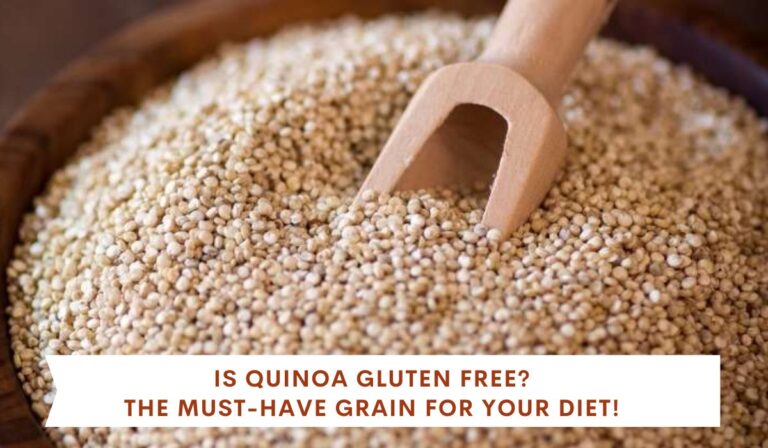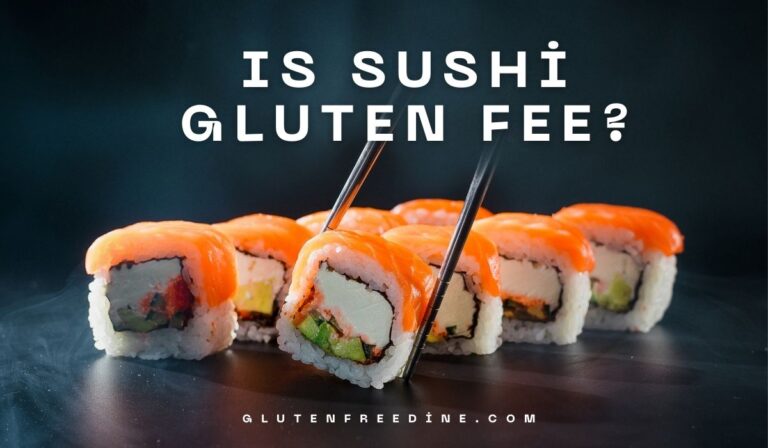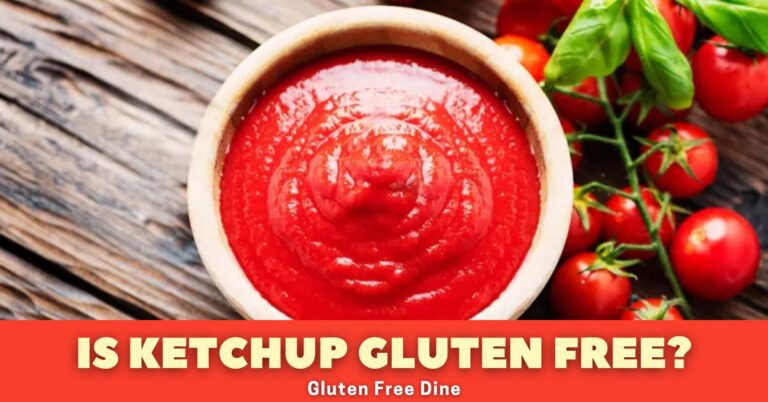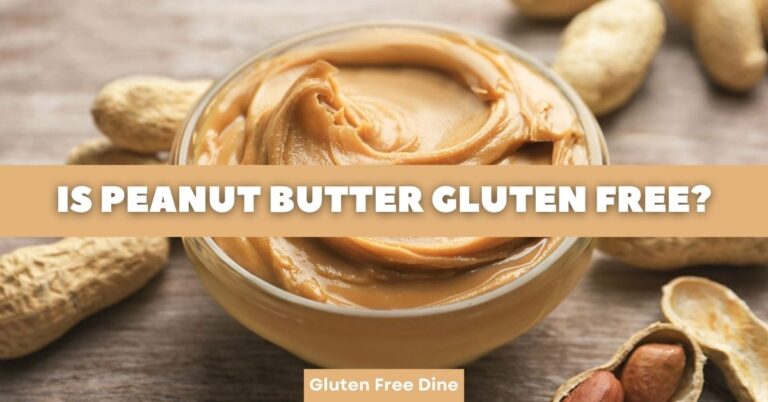Is Soy Sauce Gluten Free? The Complete Guide
Is soy sauce gluten free? No, soy sauce is not typically gluten free the main ingredient of traditional soy sauce is wheat which is not gluten free. It means that soy sauce is not gluten free and not safe for people with celiacs. But there are some soy sauces in the market which are specifically made gluten free. They use rice instead of wheat and make it a good choice for celiacs.
Soy sauce is a liquid condiment of Chinese origin, traditionally made with soybeans, wheat, salt, and a fermenting agent. It is recognized for its saltiness and pronounced umami taste. Soy sauce is a popular food used as a cooking ingredient and a condiment.
If you are a person with celiac disease or on a gluten free diet and wondering “Is soy sauce gluten free?” then read more. This article will answer all your queries.
Is Soy Sauce Gluten Free?

Despite the name, regular soy sauce is not gluten free. Wheat is a primary ingredient in soy sauce, which surprises many people new to the gluten free diet. Aa soy sauce is made with the gluten containing ingredients (soybeans, wheat, salt, and a fermenting agent) that’s why it is not gluten free and not safe for the people who are sensitive to gluten
Regular soy sauce is not gluten free but in the market you can find gluten free soy sauce which are made with rice or another gluten free grain instead of wheat. Soy sauce made with rice or purely with soybeans is gluten free and safe to eat on a gluten free diet. But as always it is smart enough to check the ingredient list and gluten free label on the package to avoid any gluten contact.
What are the Ingredients of Soy Sauce?
These are the ingredients of soy saouce, as we already discussed that basic ingreidient of soy sauce is wheat;
- Sooybeans
- Wheat
- Salt
- Water
- A fermenting agent such as yeast or mold
Types of Soy Sauce
There are alot of tapes of soy sauce in the market but here is a quick guide to the four main types of soy sauce you might spot at the grocery store:
- Chinese Soy Sauce
Soy sauce was originally created in ancient China by pressing fermented soybeans to produce a pure bean sauce. The sauce was added to dishes to preserve them and enhance their flavors while cooking. Nowadays, Chinese soy sauce often contains wheat as well as soybeans that make it gluten-containing, but it is still the most common cooking sauce used in Chinese cuisine.
- Japanese Soy Sauce
Shoyu is the general term for Japanese-style soy sauces. Typically, it is a type called koikuchi soy sauce that is made with both soybeans and wheat to produce a more aromatic flavor. Japanese soy sauce also tends to be lighter and clearer than Chinese soy sauces. Japanese soy sauce is also gluten containing and not safe for celiacs.
- Tamari
Tamari is the origin of Japanese soy sauce. While shoyu (koikuchi soy sauce) is typically brewed with about equal parts soybeans and wheat, Tamari is brewed with all soybeans or only very small amounts of wheat added.
Tamari is originally found during the miso making process, the dark red paste that comes from cooked and fermented soybeans. Tamari is the protein-rich liquid that accumulates as miso ripens. Tamari soy sauce is generally considered as gluten free and it is safe to eat on a gluten free diet.
- HVP Sauce
A HVP (hydrolyzed vegetable protein) sauce is chemically made by breaking down soy protein and mixing it with other flavorings to produce a product that resembles soy sauce. During this process, the soy protein is hydrolyzed — or broken down — into amino acids and blended with sugars, salt, coloring agents like corn syrup and caramel, water and chemicals to neutralize the concoction.
HVP (hydrolyzed vegetable protein) sauce is also gluten containing, if you have any gluten sensitivity you should avoid it.
Is Soy Sauce Safe for Celiacs?

As we Already discussed, soy sauce is not gluten free because the primary ingredient of soy sauce is wheat which makes it gluten containing so it is not safe for people with celiacs. If you are a person with celiacs or on a gluten free diet you should avoid regular soy sauce. Because it may not be safe as it contains gluten in it.
But if you want to use soy sauce in your food while on a gluten free diet then you can use soy sauce which has rice in its ingredients list or purely made with soybeans instead of what.
Soy sauce which has no gluten containing ingredient is gluten free and safe to add in a gluten free diet. Before buying a gluten free soy sauce, be smart to check the ingredient list or gluten free label on the packaging.
Nutrition Facts of Gluten Free Soy Sauce
| About 20 Servings | |
| Serving Size 1 Tbsp (15mL) | |
| Amount Per Serving | |
| Calories 10 | |
| % Daily Value* | |
| Total Fat 0g | 0% |
| Saturated Fat 0g | 0% |
| Trans Fat 0g | |
| Cholesterol 0mg | 0% |
| Sodium 960mg | 42% |
| Total Carbohydrates 1g | 0% |
| Dietary Fiber 0g | 0% |
| Sugars 0g | |
| Added Sugars 0g | 0% |
| Protein 2g |
Gluten Free Soy Sauce Alternatives
Finding a gluten-free soy sauce alternative that packs just as much flavor and brings just as much complexity to a dish can be a tough task. We’ve made it a bit easier for you by compiling a list of our favorite gluten-free soy sauce alternatives.
- Coconut Aminos

Coconut aminos is a type of sauce which is made by fermenting the coconut blossom nectar found in coconut palms and then blending it with sea salt. Although similar to soy sauce, coconut aminos tends to be a bit thinner and sweeter than traditional soy sauces.
Because the sauce comes from coconut palms and doesn’t contain any wheat, coconut aminos is naturally gluten free.
- Liquid Aminos
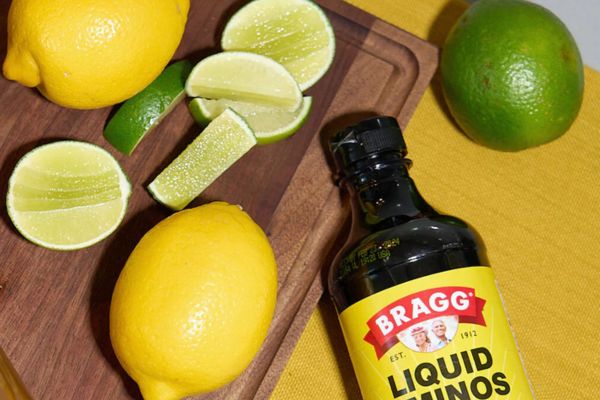
Liquid aminos is another gluten-free soy sauce alternative. Liquid aminos is a liquid protein concentrate that comes from soybeans but is not fermented. Overall, liquid aminos has a more intense taste than soy sauce with a bit of a smoky kick.
You can use liquid aminos the same way you would use regular soy sauce to add another layer of flavor to dishes and brighten up a meal. As liquid aminos sauce made by hydrolyzing soybeans or fermenting coconut sap, which are naturally gluten-free ingredients. It is gluten free and safe for celiacs.
- Worcestershire Sauce
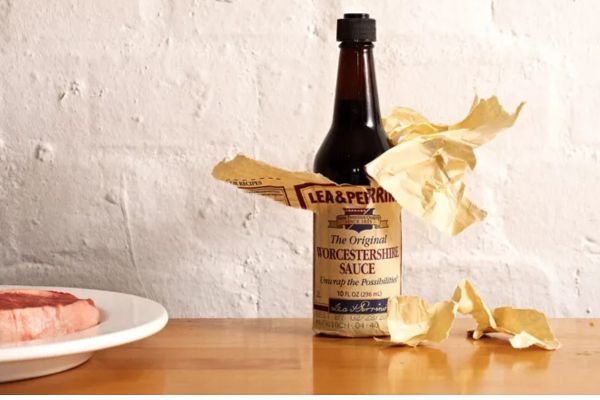
Craving that umami flavor but don’t want to use soy sauce? Worcestershire sauce is a great substitute for taking your stir-fried vegetables or marinated meat up a notch. As another fermented sauce, Worcestershire sauce offers some of the same flavors and qualities soy sauce has, but without the gluten and soy. Worcestershire sauce also has considerably less sodium than soy sauce.
- Fish Sauce

Fish sauce is made by fermenting fish or krill in salt for up to years at a time. This extended fermentation process produces a gluten-free sauce with a savory umami taste that is similar to soy sauce, but with a slight fishy taste.
Because fish sauce naturally has a fishy quality, and contains more sodium, you will probably want to be cautious about substituting it for soy sauce in equal amounts. Instead of following a one-to-one ratio, slowly mix the fish sauce into a recipe, tasting as you go and adding more as needed.
Conclusions
Is soy sauce gluten free? No, traditional soy sauce is not generally gluten free because soy sauce is made by gluten containing ingredients like wheat. Wheat used as a primary ingredient in traditional soy sauce makes soy sauce gluten containing and not safe for people with celiacs. If you are a person with gluten sensitivity or on a gluten free diet, you should avoid regular soy sauce.
But you can use soy sauces which are specifically made gluten free using gluten free ingredients instead of wheat. And some good alternatives to soy sauce can also be found in the market. As always before buying gluten free sauce it is smart enough to check the ingredient list or gluten free label on the package.
you may also wondering about
Is Worcestershire Sauce Gluten Free?
Frequently Asked Questions
Q. Which soy sauce is gluten-free?
Ans. Traditionally brewed with four simple ingredients – water, soybeans, rice, and salt, Kikkoman® Gluten-Free Soy Sauce is certified gluten-free by the Gluten Intolerance Group of North America (GIG). This soy sauce, made from rice instead of wheat, has a mild flavor and no preservatives added.
Q. Is all soy gluten-free?
In their natural form, soybeans do not contain gluten, as they are solely protein-rich. However, soy products that could be combined with other ingredients may contain gluten. The presence of gluten in soy-based products is not due to soy itself but the added additives or additional ingredients
Q. How much gluten is in soya sauce?
Ans. We know that wheat is often fermented with soy, but how much gluten is present? The answer isn’t cut and dry, as we have some research showing that even with wheat added to soy sauce, the gluten content of the ferment is <5 ppm.
Q. What sauces have gluten?
Ans. PRE-MADE SAUCES — Everything from barbecue sauce, pasta sauce, Asian peanut sauce, and teriyaki sauce can potentially contain gluten. Sauces are thickened with wheat products, so you have to read the label.



